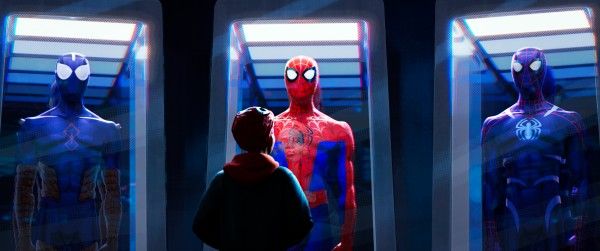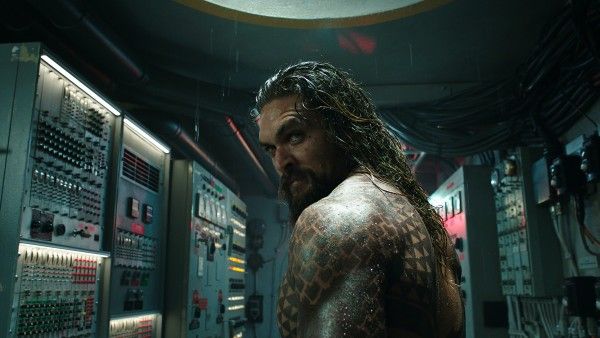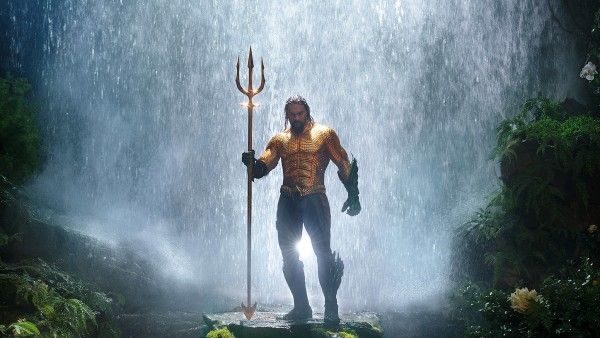As diversity slowly finds its way into studio blockbusters, 2018 has been an exceptional year for those who are not used to seeing themselves represented on the big screen. After last year’s Wonder Woman and Coco, we started 2018 with Black Panther, then the summer saw the first release by a major studio with a majority Asian-American cast in 25 years with Crazy Rich Asians. We now finish the year with the one-two punch of Spider-Man: Into the Spider-Verse and Aquaman, which push for diversity in superhero movies in ways not seen before.
On the surface, you wouldn’t normally put Aquaman and Spider-Man together unless you’re talking about their box-office earnings in that Entourage episode. One is an animated film featuring multiple universes and a pig with spider powers; the other is a live-action, 80s throwback, underwater adventure that features Pitbull covering Toto’s "Africa." But underneath all that, both movies feature the first biracial superheroes to hit the screen (in live-action and animation), and they do so in meaningful ways and not just as a gimmick. Both movies use the mixed-heritage of their protagonists to show how it influenced who they are as heroes, yet they portray them in very different ways.
Into the Spider-Verse introduces us to a teenage kid named Miles Morales, who lives in Brooklyn with his mom and dad. He spends his weekdays buried in quantum physics and advanced math at an elite private school, but his weekends are devoted to posting stickers with his original art around town and blasting Post Malone through his headphones. He also happens to be the son of African-American police officer Jefferson Davis (played by Brian Tyree Henry), and Latina nurse Rio Morales (Lune Lauren Vélez). Yet Into the Spider-Verse doesn’t make a big deal out of this. There’s no conflict made out of Miles’ background, no comment made about the color of his skin invalidating him being Spider-Man. The biggest and most noticeable difference between Miles and Peter Parker is that Miles’ family is alive and well, and one of the film’s standout scenes is simply the family getting ready for a new day of work/school. We see Miles sitting at his desk, wearing headphones and mumbling lyrics to a song, oblivious to his dad yelling at him from outside his bedroom, until his mom begins to shout to him in Spanish and he snaps out of the song.
It’s a simple and short scene with no real importance other than to establish his regular and uneventful life pre-spider-powers, yet that is exactly why it is so significant. Co-director Peter Ramsey tells us this was essential to the movie’s portrayal of Miles, as they didn’t want to draw attention to what makes Miles different, but instead “pay attention to detail in trying to show what a kid in his situation would look like and how his family dynamic would be.” This extends to the look of the family’s Brooklyn apartment, the music Miles listens to, the code-switching when he walks down the street and talks to his neighbors, to the lack of subtitles when Miles and Rio speak in Spanish. “None of us ever thought of adding subtitles,” Ramsey tells Collider. “It’s supposed to feel like a natural part of their daily flow, it makes perfect sense for them to sneak a little Spanish into their conversations. It’s nothing new or innovative to a huge part of the audience, but when you put it in a big superhero movie it does feel kind of new.”
Instead of using Miles’ background as a reason to find conflict, the film chooses to focus on what he has in common with the other characters, namely being Spider-Man and a desire to help people. According to Ramsey, an early draft was going to have the superheroes fight amongst themselves before being forced to work together as a team. Thankfully the writers decided against it, “We started realizing that the story was really about people finding commonality instead of people clashing because they were different,” Ramsey says.
Into the Spider-Verse chooses to use Miles’ background as a way to develop the character and better inform the audience of who he is, fully visible yet hidden from the story at large. This of course helps sell the “everyone can wear the mask” idea at the end of the film, just as there was nothing about Peter Parker’s Spider-Man that was inherently white, there is nothing about Miles’ Spider-Man that screams he has to be afro-latino, he just is.
Meanwhile, in another universe, we meet Arthur Curry. No longer the blue-eyed, blonde-haired boy scout of old, but instead a biracial fisher dude, product of the forbidden love between a queen of Atlantis, and a lighthouse keeper. If Into the Spider-Verse is about putting Miles’ heritage in the background, Aquaman puts it front and center and uses Arthur’s mixed-heritage to drive the story. The story of the lost heir to a throne fighting his or her way to save the kingdom from a devastating war isn’t new, and the film doesn’t really hide it. Even Superman is defined by his duality of being born on Krypton but raised on Earth. Instead, the film uses that familiar plot to explore a conflict familiar to many biracial people, the lack of acceptance from both sides. Where Miles has a loving relationship with both his parents and has taken things from both cultures in his personality and life, Arthur’s life has been haunted by the rejection from both Atlanteans and humans. He is the rightful heir to the throne of Atlantis, and on land he’s stronger than any man, but he is seen as an outsider wherever he goes. Atlanteans hate him because of his blood, and he’s often referred to as a “half-breed”. On land, he was bullied as a kid and mocked as an adult for being different and talking to fish.
The casting of Jason Momoa as Arthur Curry is nothing short of genius, as Momoa’s mixed-heritage (half-Hawaiian, half-Caucasian) makes Arthur’s struggles visible. Having Nicole Kidman as Queen Atlanna and Māori actor Temuera Morrison doubles down on Aquaman’s place in the biracial community by making him not only mixed in terms of Atlantean and human, but of mixed-race in terms of Caucasian and Polynesian. This makes the “half-breed” comments all the more impactful, specially when coming from blue-eyed blonde Patrick Wilson as Orm – who looks just like the Aquaman from the comics – reminding of a very real hatred for mixed couples and their children.
Speaking with Black Girl Nerds, director James Wan says Momoa’s own background and upbringing attracted him to the project, “For Jason growing up in Hawaii looking the way he does, and then moving to the Midwest looking the way he does, he didn’t quite fit in when he was over there and he didn’t quite fit in when he was over here.” When Arthur finally embraces both parts of himself and carves his own path to become the hero we know, it is all the more powerful because we have seen him fight against prejudices and rejection. He is neither fully human or fully Atlantean, he is more, and as many biracial kids realize, it’s that duality that makes him stronger.
Now that the superhero genre has established its dominance over the film industry, it is time to strive for more than just entertainment. Representation in superhero movies is important, as we have already seen how the landmark release of Wonder Woman and Black Panther affected the culture and the box office. But there’s still a lot of work to be done. Their way around it may be as different as Spider-Ham and Ocean Master, yet both Aquaman and Into the Spider-Verse show how normal it is to feel like you don’t belong, and that the things that make us different are exactly what makes us special. The appeal of Stan Lee’s and Steve Ditko’s Spider-Man was that anyone could see themselves as a hero, and 2018's final two superhero movies show just how true that sentiment is.





